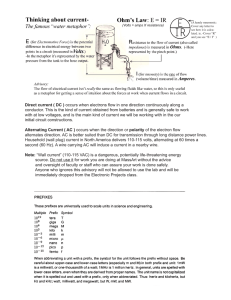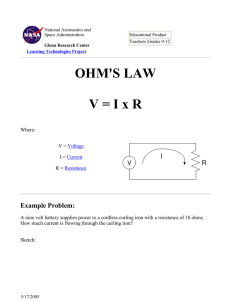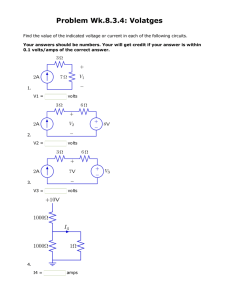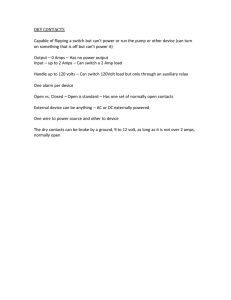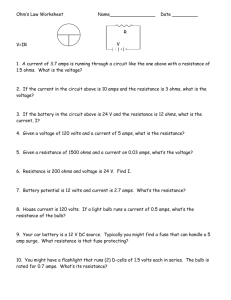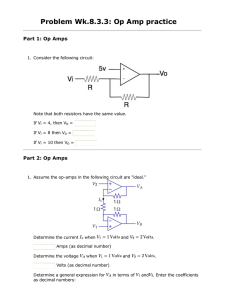For 12V and 24V AC/DC - Security Door Controls
advertisement
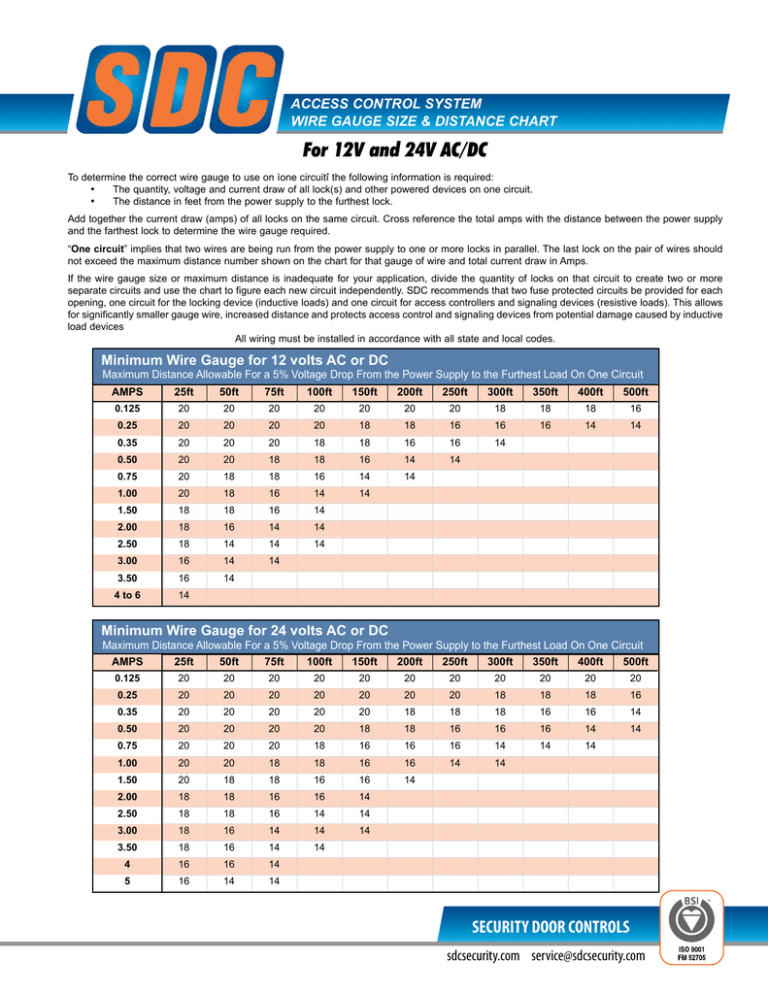
Access Control System WIRE GAUGE SIZE & DISTANCE CHART For 12V and 24V AC/DC To determine the correct wire gauge to use on ìone circuitî the following information is required: • The quantity, voltage and current draw of all lock(s) and other powered devices on one circuit. • The distance in feet from the power supply to the furthest lock. Add together the current draw (amps) of all locks on the same circuit. Cross reference the total amps with the distance between the power supply and the farthest lock to determine the wire gauge required. “One circuit” implies that two wires are being run from the power supply to one or more locks in parallel. The last lock on the pair of wires should not exceed the maximum distance number shown on the chart for that gauge of wire and total current draw in Amps. If the wire gauge size or maximum distance is inadequate for your application, divide the quantity of locks on that circuit to create two or more separate circuits and use the chart to figure each new circuit independently. SDC recommends that two fuse protected circuits be provided for each opening, one circuit for the locking device (inductive loads) and one circuit for access controllers and signaling devices (resistive loads). This allows for significantly smaller gauge wire, increased distance and protects access control and signaling devices from potential damage caused by inductive load devices All wiring must be installed in accordance with all state and local codes. Minimum Wire Gauge for 12 volts AC or DC Maximum Distance Allowable For a 5% Voltage Drop From the Power Supply to the Furthest Load On One Circuit AMPS 25ft 50ft 75ft 100ft 150ft 200ft 250ft 300ft 350ft 400ft 500ft 0.125 20 20 20 20 20 20 20 18 18 18 16 0.25 20 20 20 20 18 18 16 16 16 14 14 0.35 20 20 20 18 18 16 16 14 0.50 20 20 18 18 16 14 14 0.75 20 18 18 16 14 14 1.00 20 18 16 14 14 1.50 18 18 16 14 2.00 18 16 14 14 2.50 18 14 14 14 3.00 16 14 14 3.50 16 14 4 to 6 14 Minimum Wire Gauge for 24 volts AC or DC Maximum Distance Allowable For a 5% Voltage Drop From the Power Supply to the Furthest Load On One Circuit AMPS 25ft 50ft 75ft 100ft 150ft 200ft 250ft 300ft 350ft 400ft 500ft 0.125 20 20 20 20 20 20 20 20 20 20 20 0.25 20 20 20 20 20 20 20 18 18 18 16 0.35 20 20 20 20 20 18 18 18 16 16 14 0.50 20 20 20 20 18 18 16 16 16 14 14 0.75 20 20 20 18 16 16 16 14 14 14 1.00 20 20 18 18 16 16 14 14 1.50 20 18 18 16 16 14 2.00 18 18 16 16 14 2.50 18 18 16 14 14 3.00 18 16 14 14 14 3.50 18 16 14 14 4 16 16 14 5 16 14 14 SECURITY DOOR CONTROLS sdcsecurity.com service@sdcsecurity.com sdcsecurity.com service@sdcsecurity.com Ohms Law To Determine an Unknown Voltage: E = I x R E = Volts I = Current, Amps R = Resistance, Ohms Example: .25 Amps (I) x 96 Ohms (R) = 24 Volts (E) To Determine an Unknown Current: I = P / E E = Volts I = Current, Amps P = Power, Watts Example: 6 Watts (P) ÷ 24 Volts (E) = .25 Amps (I) To Determine an Unknown Current: I = E / R E = Volts I = Current , Amps R = Resistance, Ohms Example: 24 Volts (E) ÷ 96 Ohms (R) = .25 Amps (I) To Determine an Unknown Wattage: P = E x I E = Volts I = Current, Amps P = Power, Watts Example: 24 Volts (E) x .25 Amps (I) = 6 Watts (P) To Determine an Unknown Resistance: R = E / I E = Volts I = Current, Amps R = Resistance, Ohms Example: 24 Volts (E) ÷ .25 Amps (I) = 96 Ohms (R) SECURITY DOOR CONTROLS SECURITY DOOR CONTROLS © 2011 Security Door Controls LIT-WireChart 11.11 www.sdcsecurity.com service@sdcsecurity.com [t] 800.413.8783 805.494.0622 [f] 805.494.8861 801 Avenida Acaso, Camarillo CA 93012 • PO Box 3670, Camarillo CA 93011-3670
